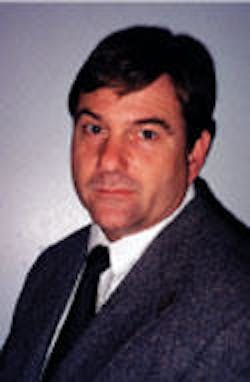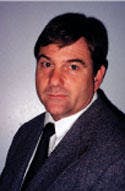Digital services drive network evolution
The cable industry is wholeheartedly embracing a digital future, and that's good news for the fiber-optics industry.
BY DON GALL AND MITCH SHAPIRO
The Society of Cable Telecommunications Engineers (SCTE-www.scte.org) held its 2001 Emerging Technologies (ET) conference in San Jose, CA, in January. The charter of this annual SCTE conference is to look ahead to technical and business trends just beyond the horizon. Besides providing a good look at the current thinking in technology, the ET conference is a great place to catch up with old friends and the movers and shakers in the cable industry's technical community.
The central question addressed at this year's conference was how best to support the flood of digital services that are just now starting to have an impact on hybrid fiber/coax (HFC) networks. Digital services are not new to the industry; in fact their roots go back more than 30 years. What has changed is that they are moving from being small-time incremental businesses, which in many cases cost more to deploy than the cash flow they generated, to major contributors to the bottom line. Reflected in this change is that not a single paper presented at the conference was focused on analog services.
Multimedia, high-speed data services
In addition to generating an impressive alphabet soup of acronyms, the ET sessions demonstrated that the cable industry is wholeheartedly embracing a digital future with increased emphasis on interactive content such as multimedia on demand and high-speed data services. That's good news for the fiber-optic industry for at least two reasons.
First, everything eventually has to achieve equilibrium. Cable operators will have to balance the added complexity of the digital services with the need to provide better reliability so they can compete with the satellite, wireless, and enhanced telephone-centric providers vying for parts of the same pie. This feat can be accomplished by adding highly trained staff and automated telemetry equipment to the entire network or deploying fiber optics deeper into their networks. The additional fiber optics will lower operational costs in the middle of the network and allow resources to be shifted to the network ends. Operational costs for the new services will then be in line with the added complexity.
This shift of resources, while inevitable, will not happen overnight. Several larger operators like AOL/Time Warner and Cox are very close to completing large and expensive HFC network upgrade programs. As a result, they will be reluctant to spend more on infrastructure until they establish the incremental revenue-producing businesses these upgrades have enabled and competition or new applications push them into the next upgrade cycle. At the same time, other operators got a late start in their upgrade programs or have recently acquired lots of cable systems that need to be upgraded. These companies will continue to spend heavily over the next several years to add fiber and electronics to enable their networks to deliver today's new digital services. As a whole, the industry can be expected to spend several billion additional dollars to bring their networks up to the new status quo. Looking beyond this investment to deliver today's digital services, we find a second piece of good news for the fiber-optics industry. As new lines of interactive digital business begin to develop, they will generate new content. And if the cable industry has had any constant in its history, it's that "new content fuels consumer demand, which in turn drives network infrastructure."
As interactive content evolves, so will competition to deliver it to the consumer. Today's HFC networks are configured to deliver mostly broadcast-style services with some incremental data and interactive multimedia. With the help of new technologies from innovative companies and some creative thinking, HFC networks will be able to deliver tens of megabits per second of unique content per customer.
One such enabling technology has been developed by Advent Networks (Austin, TX). (We remind readers that Pangrac & Associates has a close business relationship with Advent). Advent's system can provision dedicated downstream bandwidth in increments of 5 Mbits/sec up to 40 Mbits/sec or the maximum radio-frequency (RF) channel capacity on request. The upstream bandwidth can be symmetrical for networks configured for the bandwidth, but Advent's standard product delivers up to 8 Mbits/sec in 500-kbit/sec increments that work well in standard cable-industry HFC networks.
Another technically feasible (but, in our view, less practical) approach is based on a concept from AT&T Labs-Research, which would couple several RF assignments together in an HFC network to deliver 100-Mbit/sec Ethernet services.
FTTH...eventually
We believe that even these data rates will not be enough in the 5-10-year time frame if some of the predictions about content come to pass. Several industry sources have suggested that future needs for subscriber-based bandwidth will approach 155 Mbits/sec. At bandwidth levels in this range, the case for fiber-to-the-home (FTTH) networks begins to make more sense. Then why not just build FTTH networks today? The answer is threefold: FTTH networks are still relatively expensive to build; existing networks not only handle existing content, but can also accommodate near-term content growth; and there isn't a network medium out there, including FTTH, that will last forever. In many urban environments, it's necessary to constantly spend operational dollars reconfiguring and repairing THE network-no matter what type it is.
What we saw and heard at the SCTE ET conference was good news for the optical equipment industry. But it was also very grounded in the realities of business, where typically it's unwise to "put the cart before the horse." One lesson of the dot-com debacle is that you can build a business on a dream, but unless you have something to sell-at a price the market will bear-don't expect to have any customers. In our market economy, the optimum driver of network evolution is expanding demand for content and services as well as healthy competition aimed at profitably satisfying that demand.
Mitch Shapiro has been tracking and analyzing the broadband industry for more than 12 years. He currently directs the strategic research program of Broadband Markets, which develops and markets proprietary databases, financial modeling tools, and strategic reports focused on the competitive broadband industry. He can be reached at [email protected].


